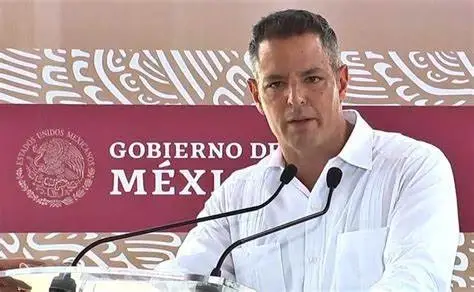The Interoceanic Corridor of the Isthmus of Tehuantepec (CIIT) is emerging as a strategic engine for the economic transformation of the south-southeast of Mexico. However, its success will not only depend on the industrial and logistics infrastructure, but also on the consolidation of an innovation ecosystem that facilitates the interaction between companies, academia, training centers and the public sector that encourages the generation of knowledge and favors the transfer of technology.
Vice Admiral Juan Carlos Vera Minjares, General Director of the Interoceanic Corridor, maintains a dialogue with local authorities, coordinated by the municipal president of El Espinal Lic. Esperanza Benítez Arizmendi; the municipal science and technology department and the National Technological Institute of Mexico (TecNM); with this, crucial emerging sectors have been identified, such as railway engineering, industry 4.0, green hydrogen, aquaculture, and artificial intelligence applied to health and biotechnology. All these sectors require highly specialized talent for their sustainable development.
To achieve this goal, building academic and technical capacities is essential. In this sense, the National Association of Universities and Higher Education Institutions (ANUIES) plays a fundamental role. Its mission is to strengthen higher education and research through inter-institutional collaboration, ensuring that the knowledge generated in universities has a real impact on the economic and social development of the region.
To this end, the creation of an ANUIES Research and Technological Innovation Center in El Espinal is being promoted, which seeks to become a pillar in the formation of highly qualified human capital. This center will integrate strategic areas such as biotechnology, artificial intelligence, renewable energy and advanced manufacturing.
The Innovation Ecosystem in El Espinal: A Strategic Project
The development of this ecosystem, led by CIIT, in collaboration with ANUIES, TecNM, the Universidad Autónoma Benito Juárez de Oaxaca (UABJO) and the state and municipal governments, not only responds to the need to train specialists in emerging sectors, but also seeks to strengthen collaboration between academia, industry and government. This synergy will be key to generating technological solutions, promoting entrepreneurship and ensuring that training is aligned with the demands of the labor market.
It is crucial that this ecosystem is not limited only to higher education. One of the greatest challenges will be to influence basic and upper secondary education, preparing young people to face the challenges of the future. Without a solid educational foundation, it will be difficult for local talent to take advantage of the opportunities that the Corridor will bring.
This challenge involves: 1) Improving the teaching of science, technology, engineering and mathematics (STEM) at basic and secondary levels, promoting scientific and technical vocations from an early age. 2) Developing dual and technical training programs that provide practical skills to students from high school. 3) Linking universities and research centers with secondary and basic schools through mentoring, workshops and collaborative projects.
El Espinal, with its willingness to host this innovation ecosystem, has the potential to become a model for the rest of the state. However, success will depend on effective governance, where each institution has a well-defined role and the different levels of government work in a coordinated manner towards a common agenda of scientific and technological development.
CIIT represents a unique opportunity to transform the economy of the south-southeast. Its impact will depend on the effective integration of science, technology and education as fundamental pillars of development. The success of this model will depend on the ability to generate strategic alliances, ensure sustainable financing and guarantee that education at all levels is aligned with the needs of the future.
The challenge is great, but the opportunities are even greater. Therefore, a strategic intervention by the State to catalyze innovation, scientific and technological development is urgent for those regions whose goal is to generate a highly competitive economy, capable of increasing the well-being of its citizens. CIIT represents the possibility of implementing an integrated model of research and innovation whose purpose is the birth of an ecosystem that allows for a knowledge-based economy.
Source: herladodemexico




